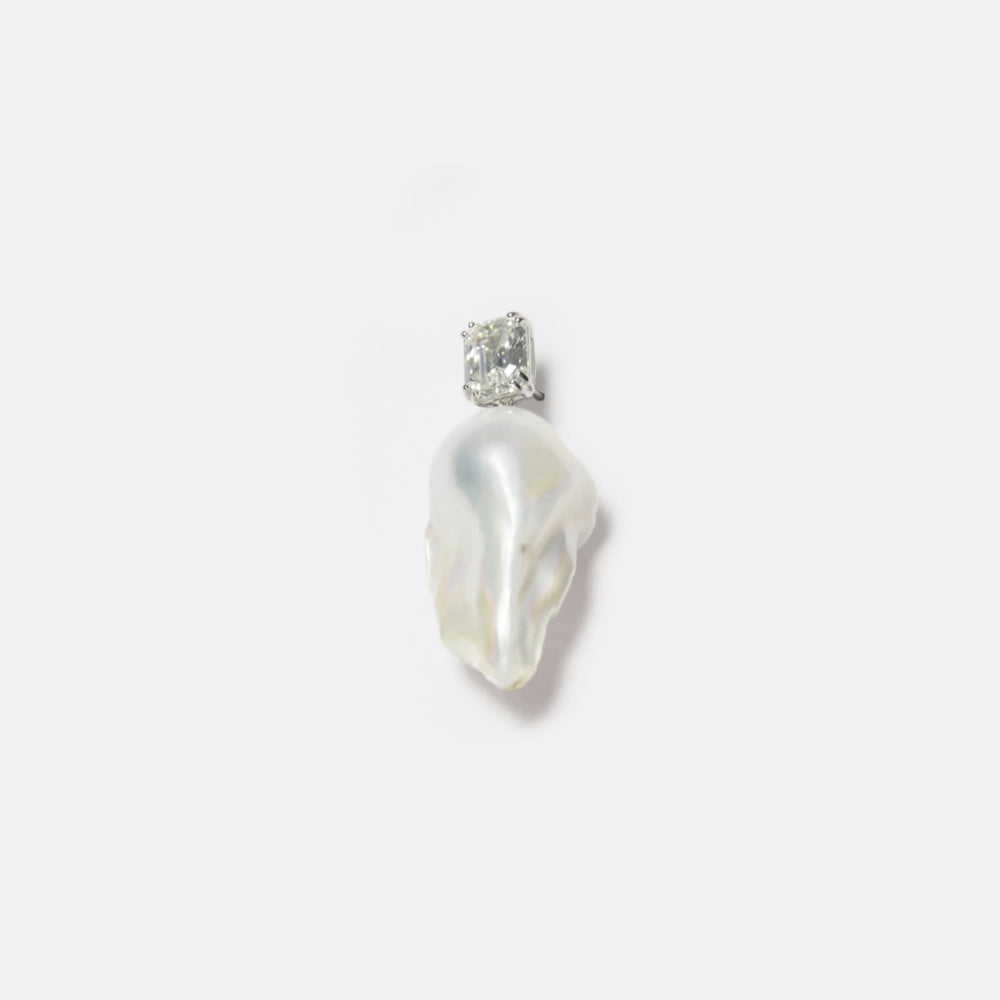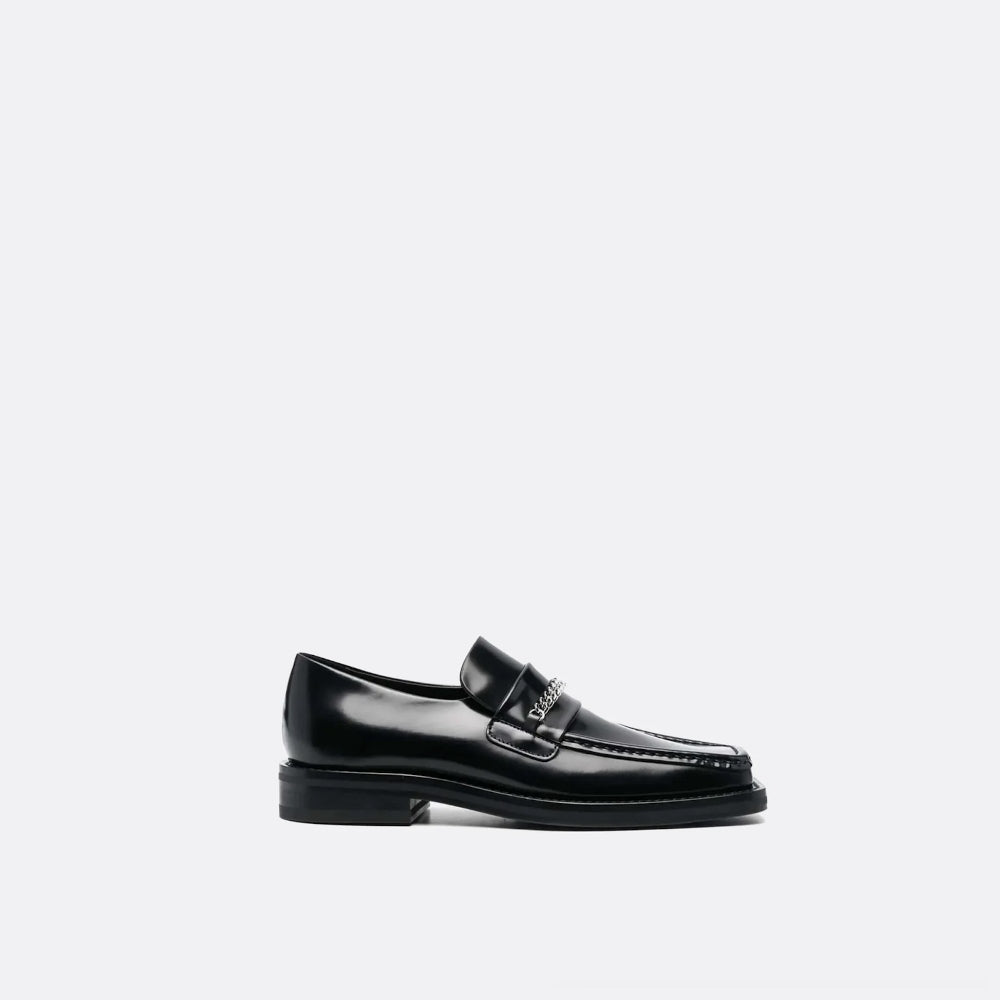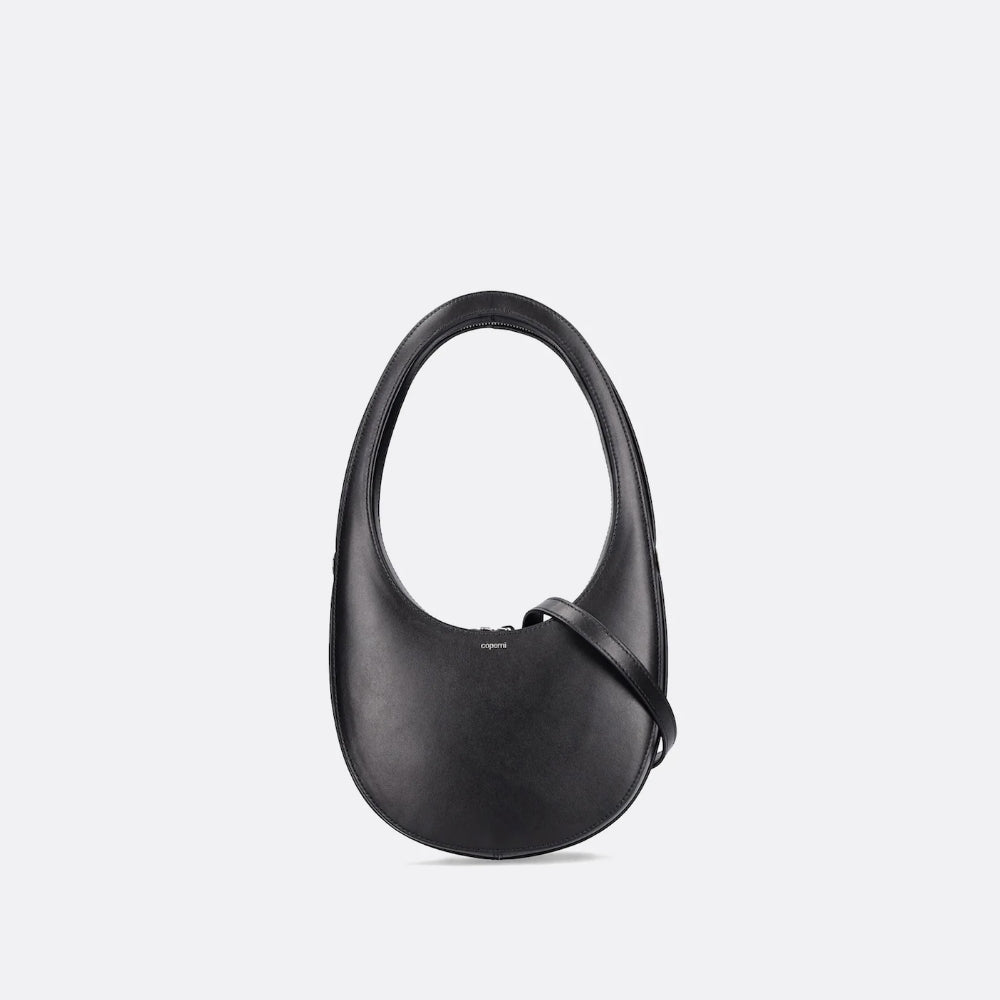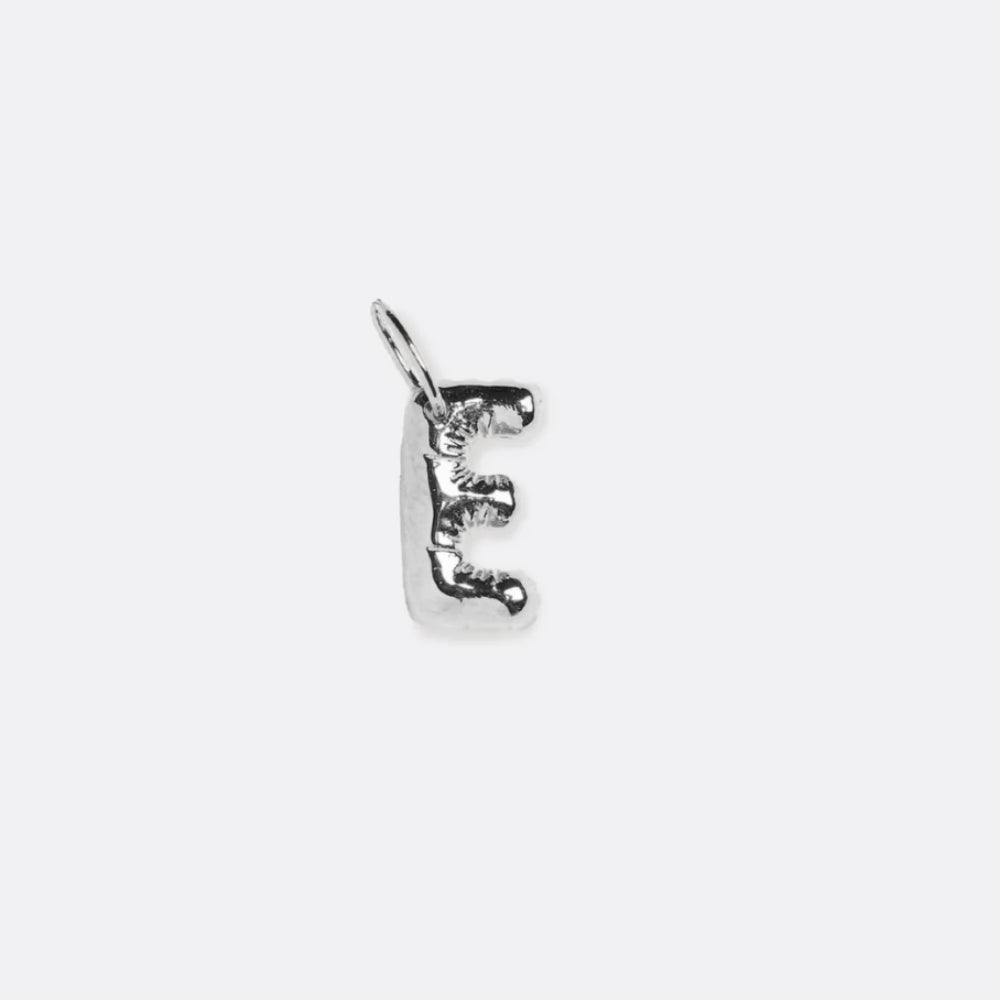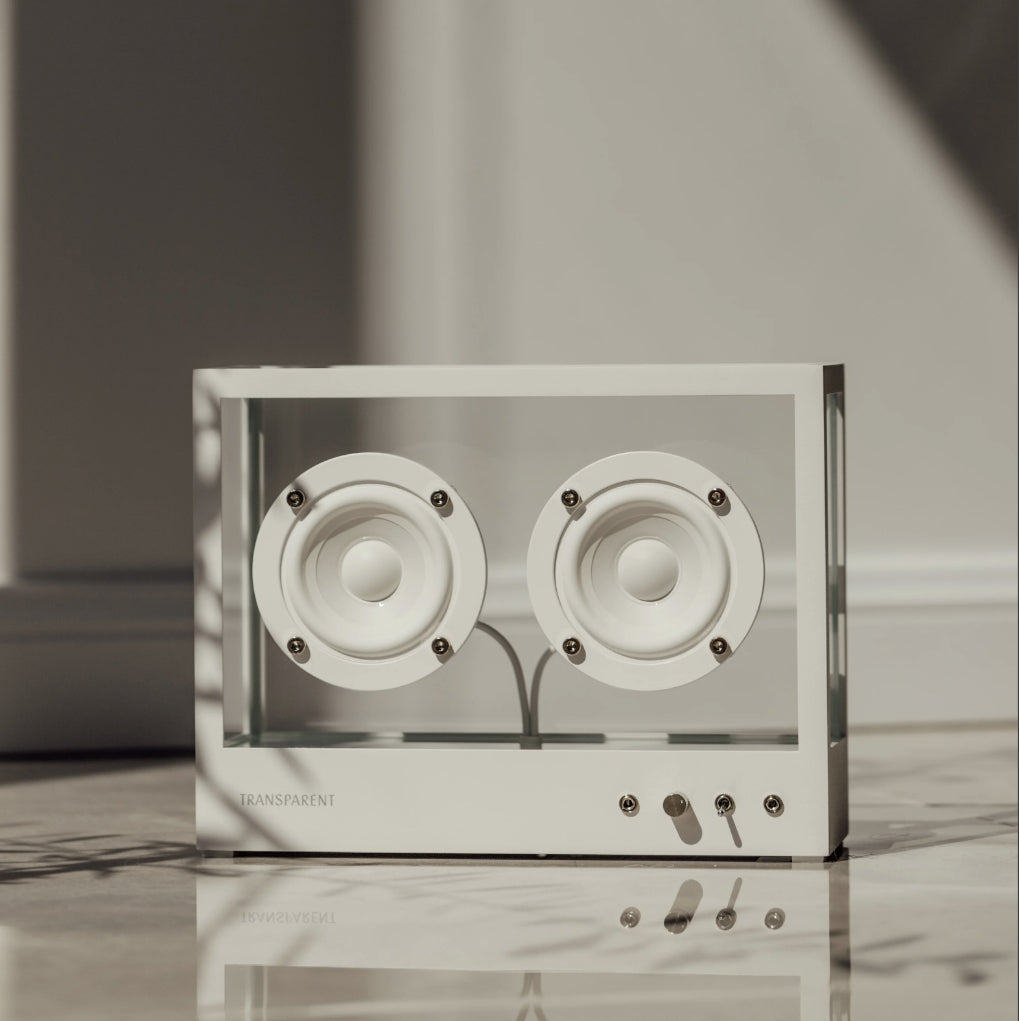Need help caring for your items?
Care Guide
Take good care of your favorite pieces and make them last longer by following our care guide.
Our assortment from our designers are curated with longevity in mind, and with the right care, you can significantly extend the life of each piece. How you care for your clothes plays a key role in their lifespan and environmental footprint. Thoughtful care makes a meaningful difference - take a look at some tips in our care guide here.
Generel tips
Only wash your garments when truly necessary. Frequent washing contributes to fabric wear and shortens the lifespan of your clothes. Instead, refresh items by airing them out or using a steamer. Fewer washes mean less energy consumption and less stress on the material—an easy way to care for both your clothing and the planet.
More detergent doesn’t equal cleaner clothes. Overusing detergent can leave residue and increase environmental harm. A small amount of eco-labelled detergent is enough to clean effectively. Avoid fabric softeners, which can coat fibres and reduce breathability.
Lowering your wash temperature from 60°C to 30°C can almost halve your energy use, without compromising cleanliness. Always follow the garment’s care label, but unless heavily soiled, most items will wash perfectly well at lower temperatures.
Skip the tumble dryer. Air-drying garments reduces energy use and preserves fabric quality, helping your clothing keep its shape and structure longer. Whenever possible, dry clothes on a line or drying rack instead.
Wool
Cashmere is one of the rarest and most luxurious natural fibres, celebrated for its exceptional softness, warmth, and lightness. With careful handling, your cashmere garments can maintain their beauty, comfort, and longevity for years to come. Naturally, cashmere may develop pilling in areas exposed to friction, which is a normal part of the fabric’s life cycle and not a sign of poor quality. Pills can be gently removed with a cashmere comb or, if preferred, a fabric shaver used lightly without applying pressure. Be mindful of jewellery and bag straps that can snag the delicate fibres. To preserve the softness and shape of your cashmere, allow garments time to rest between wears, giving the natural fibres a chance to recover.
MISSING
Do not wring or twist wool garments to remove excess water. Lay the item flat on a clean, dry towel, then roll it up to gently press out the water. Reshape the garment and lay it flat on a dry towel or drying rack, away from direct sunlight or heat sources.
Ironing Wool
Use a low heat setting, placing a damp cloth between the iron and garment. Iron on the garment’s wrong side if possible.
Steaming Wool
Steaming is gentler than ironing and helps remove wrinkles and odors. Use a handheld steamer or hang the garment in a steamy bathroom.
Ensure wool garments are clean before storing, as clean wool is less appealing to moths. Fold knitwear gently, avoiding hanging to prevent stretching. Store wool items in a cool, dry place. For long-term storage, place garments in vacuum-sealed bags with a small cotton pouch of cedar wood balls—be careful not to let the cedar touch the fabric, as it may leave stains. Alternatively, store garments in a sealed box with cedar balls placed between pieces.
When storing in vacuum bags, use a clear plastic box for easy access. Place heavier knits at the bottom and lighter ones on top. This makes finding garments easier when changing seasons. Upon unpacking, refresh the wool with a steamer to restore its shape and texture. Steaming is also effective for eliminating any bug larvae.
Silk
Silk is made from incredibly fine, natural protein fibers produced by silkworms. Celebrated for its smooth texture, breathability, moisture-wicking abilities, and remarkable strength, silk adds a luxurious touch to any wardrobe. With the right care, silk garments retain their natural sheen and softness for years to come.
To maintain silk’s delicate structure, avoid prolonged exposure to direct sunlight, which can weaken fibers and cause colors to fade. Keep silk garments away from perfumes, deodorants, and hairsprays, as they may stain or damage the fabric. Never use bleach on silk. Instead of frequent washing, simply air out silk garments after wearing to refresh them naturally and extend their life.
Silk requires less frequent washing compared to other fabrics. After each wear, simply air out garments to refresh them and remove any odors. For minor stains, spot clean gently with cold water and a mild silk detergent, always testing first on an inconspicuous area. For more stubborn stains, professional cleaning is recommended to preserve the fabric’s delicate fibers.
Hand-Washing Silk
Whenever possible, hand washing is the gentlest way to care for silk. Always begin by checking the care label, as some silk items may require dry cleaning. If hand washable, fill a basin with cold water and a silk-specific detergent. Gently swish the garment through the water without scrubbing or stretching the fibers. Rinse thoroughly in cool water and avoid soaking for long periods, as this can weaken the fabric.
Machine Washing Silk
If machine washing is allowed, always check the care label first. Use a delicate cycle set to 30ºC or lower and place the garment in a mesh laundry bag to protect it during the wash. Use a mild, silk-friendly detergent and never add fabric softeners. Avoid tumble drying entirely—air dry silk garments flat to maintain their natural texture and luxurious drape.
By following these gentle washing practices, you can help maintain the softness and longevity of your wool garments.
After gently pressing out excess water without wringing, lay the garment flat on a clean towel, roll it up to absorb moisture, then reshape and lay it flat to dry in a shaded, well-ventilated area away from direct sunlight and heat sources.
Only iron silk when it is completely dry, using the lowest heat setting and a thin cloth between the iron and the fabric, ironing on the reverse side, or gently steam while keeping the steamer moving to avoid water spots and pressing too hard.
Store silk garments folded in a cool, dry place away from sunlight, using breathable cotton or muslin bags to protect them from dust and insects while preventing stretching and distortion.
Cashmere
Cashmere is among the rarest and most luxurious natural fibres, celebrated for its exceptional softness, warmth, and lightness. With careful handling, your cashmere garments can maintain their beauty, comfort, and longevity for years. Naturally, cashmere may develop pilling in areas exposed to friction, a normal part of the fabric’s life cycle and not a sign of poor quality. Pills can be gently removed with a cashmere comb or, if preferred, a fabric shaver used lightly without applying pressure. Be mindful of jewellery and bag straps that can snag the delicate fibres. To preserve the softness and shape of your cashmere, allow garments time to rest between wears, giving the natural fibres a chance to recover.
Cashmere benefits from minimal washing—airing out garments after wear is often enough to keep them fresh. For small stains, gently spot clean with a damp cloth and a wool or cashmere-specific detergent, taking care not to rub the fibres. Frequent washing, dry cleaning, bleach, and fabric softeners should be avoided, as they can weaken the delicate yarns.
Hand-Washing Cashmere
When hand washing, fill a basin with lukewarm water (around 30°C/86°F) and add a mild detergent. Submerge the garment, swirl it gently, and let it soak for 10 minutes before rinsing thoroughly—pressing, never wringing, to remove excess water.
Machine Washing Cashmere
If machine washing is permitted by the care label, place the item in a mesh bag, use a gentle detergent, and select a delicate cycle at or below 20°C. Tumble drying should always be avoided to protect the natural structure of the fibre.
By following these gentle washing practices, you can help maintain the softness and longevity of your wool garments.
After washing, gently press out excess water—never wring. Lay the garment flat on a clean, dry towel, roll it up to absorb moisture, then reshape and dry flat on a towel or rack, away from direct sunlight and heat sources. Never tumble dry cashmere, as the heat and agitation can permanently damage the fibres.
Cashmere rarely needs ironing, but if necessary, always use the lowest heat setting and turn the garment inside out. Place a thin cloth between the iron and the fabric to avoid direct contact and never use steam directly on the cashmere.
Steaming your cashmere
Steaming is a gentler alternative—hang the garment and use a handheld steamer at a safe distance to relax wrinkles and refresh the fibres without pressure or heat damage.
Before storing, make sure your cashmere is completely clean to prevent moth damage. Fold garments gently rather than hanging them to preserve their shape. Store in breathable cotton garment bags or drawers, adding cedar balls or lavender sachets for natural protection. If you notice tiny holes in your knits, it may be time for a closet refresh: empty the space, vacuum, clean thoroughly, and steam garments to help eliminate any potential larvae.
Linen
Linen is a breathable, durable natural fibre that softens beautifully with every wear. With proper care, your linen garments will retain their crisp yet effortless elegance for years. Treat stains promptly using gentle solutions like diluted white vinegar or a mild detergent, avoiding harsh chemicals or aggressive spot removers that can weaken the fibres. Dry cleaning should only be used when necessary, as frequent chemical treatments may shorten the life of the fabric.
Spot clean small stains gently using a solution of mild detergent or diluted white vinegar, without scrubbing harshly. Wash linen by hand or in the machine according to the care label, using a gentle detergent and cool or lukewarm water. Wash dark colours at lower temperatures to reduce fading, and always separate light and dark linens to avoid colour bleeding. Never use bleach.
Air dry your linen garments whenever possible. After washing, reshape and either lay them flat on a clean towel or hang them to dry—always out of direct sunlight. If using a dryer, choose a low heat setting and remove garments while still slightly damp to prevent excessive wrinkling. Avoid frequent tumble drying and heavy spinning, which can increase wear.
Iron linen inside out while still slightly damp, using a medium to hot setting. For deeper creases, use a steam iron or place a damp cloth between the iron and fabric to protect the fibres and maintain smoothness.
Store linen garments in a cool, dry place, away from direct sunlight. Fold them neatly to avoid deep creases, or hang them on padded hangers to protect their shape.
Suede
Soft, delicate, and timeless—suede thrives with thoughtful care. Crafted from the underside of leather, suede has a luxuriously soft, velvety texture. Its tactile surface is also highly absorbent and delicate, making proper care essential for preserving both its appearance and structure over time. Whenever possible, wear suede only in dry conditions, as moisture can stain and stiffen the fibres. If exposed to rain, let the item dry naturally before gently brushing with a suede brush to restore the nap. Because suede’s short fibres easily trap dust and dirt, regular brushing in one direction helps maintain its surface. A waterproofing spray adds a protective barrier—apply it routinely and brush before and after application to preserve the finish. To retain shape and texture, avoid wearing the same suede item on consecutive days, allowing it to breathe and recover between uses.
Use a dedicated suede brush or a clean, soft toothbrush to gently remove surface dirt, always brushing in one direction. For dry stains, a suede eraser (or a clean pencil eraser) works well on small marks. Mud should be left to dry completely before being brushed off. For deeper cleaning, follow the instructions of a specialised suede cleaner, or consult a professional for stubborn stains. If your suede gets wet, blot gently with a dry cloth, let it dry naturally, and brush gently to restore its original softness.
Suede should always be dried naturally, away from direct heat or sunlight, which can cause fading, shrinking, or stiffening. If your suede gets wet, blot the moisture gently with a clean, dry cloth—never rub or wring. Let it dry at room temperature, then restore its nap by brushing in one direction with a suede brush. Avoid using tumble dryers or heated drying devices, as these can permanently damage the delicate texture.
Ironing suede is not recommended, as heat and pressure can flatten its soft fibres and leave marks. Instead, use a steamer held at a safe distance to help release wrinkles. After steaming, allow the garment to cool fully, then brush lightly to re-fluff the surface.
Store suede items in a cool, dry place, away from direct sunlight to prevent fading and drying. Use breathable cotton bags to shield them from dust without trapping moisture. For shoes, insert shoe trees to help maintain their shape, and for bags, stuff with tissue paper. Avoid plastic storage, as suede needs air to maintain its suppleness.
Denim
Denim is a timeless fabric celebrated for its durability, versatility, and the way it softens and fades in a way that’s unique to its wearer. With mindful care, denim doesn’t just last—it gets better. To preserve its fit and structure, wash denim only when necessary. Between washes, simply air out your garments or hang them in a steamy bathroom to freshen up. If you're wearing raw denim, the fabric will develop high-contrast fading over time, especially around the knees, lap, and pockets. These patterns are part of the fabric’s charm, becoming a visual story of how you move and live. For the best results, wear raw denim regularly before its first wash, and wash it infrequently. Just be mindful—raw denim can transfer dye to light-coloured clothing, shoes, or upholstery, so take care when styling or storing.
Spot-clean minor marks with a damp cloth and mild detergent. When a full wash is needed, turn denim inside out and wash with similar colours on a cold cycle (at or below 40°C) using a gentle detergent. Avoid bleach and fabric softeners. Raw denim should be hand-washed in cold water to preserve its deep indigo tone, or machine-washed on a delicate cycle alone or with dark items.
Avoid tumble drying—heat can cause shrinkage and alter the fabric’s structure. Instead, reshape your jeans while damp and hang them to air dry in a shaded area. This helps maintain the original fit and prevents fading from direct sunlight.
If ironing is necessary, turn the garment inside out and use a low heat setting. Avoid ironing over prints or embellishments to prevent damage and shine marks. Alternatively, use a steamer to gently release wrinkles—this is especially useful for maintaining the texture and shape of denim without flattening it.
Fold or hang denim in a cool, dry space away from sunlight to prevent fading. Avoid tight folds that can cause creasing. For raw denim, hang to dry over a towel to catch any dye runoff, and store with care to preserve the fabric’s unique character.
Leather
Leather is a durable yet sensitive natural material that becomes more beautiful with age. As it wears, it develops a unique patina—marking time through soft creases, subtle shine, and evolving texture. To preserve this character, wear leather garments in dry conditions when possible, as moisture can stain and weaken the surface. Rotate pieces between wears to let the leather breathe and maintain its shape and softness, allowing the material to age gracefully and naturally over time.
Dust leather regularly with a soft, dry cloth to keep it looking its best. Address surface stains promptly—especially those from dirt, salt, or alcohol—before they set. For deep stains or a full clean, consult a professional leather cleaner to avoid damaging the finish.
If your leather gets wet, gently blot away excess moisture with a soft, dry cloth—never rub. Let it air dry at room temperature, away from direct heat sources like radiators or sunlight, which can cause cracking or shrinkage. Never use a hairdryer or tumble dryer. While drying, lay the garment flat or hang it on a padded hanger to help retain its shape.
Ironing or steaming leather is not recommended.
To preserve leather’s natural structure and finish, store it in a cool, dry place away from direct sunlight, which can cause fading and drying. Use breathable garment bags—preferably cotton—not plastic, as leather needs air circulation to prevent mildew. For jackets or coats, hang them on wide, padded hangers to maintain their shape. For bags or shoes, stuff them lightly with acid-free tissue paper. Avoid overcrowding to prevent creasing or pressure marks, and keep leather items away from heat sources or damp areas.
Synthetic Fibres
Synthetic fibres—such as polyester, polyamide, acrylic, and elastane—are widely used in garments like activewear, swimwear, and technical clothing due to their durability, flexibility, and quick-drying nature. While they offer many benefits, synthetic materials can shed microplastics during washing, which pose a threat to marine ecosystems. With proper care, you can extend the life of your synthetic garments and reduce their environmental impact.
To care for synthetic fabrics, try to minimize washing when possible. Air and steam garments between wears, and spot-clean stains if only a small area is affected. When washing, separate synthetics from abrasive fabrics like denim, and always close zippers and buttons to prevent fiber damage. Avoid tumble drying and high spin cycles; instead, air dry your clothes to preserve their shape and reduce shedding.
To help reduce microplastic pollution, use a Guppyfriend Washing Bag. This bag captures microfibres during washing, helping extend the life of your clothes and prevent them from entering waterways.
For activewear, use a mild detergent designed for synthetics to preserve features like breathability and moisture-wicking. Avoid fabric softeners, which can coat the fibers, and don’t overload the washing machine, as friction from crowded loads can cause wear and tear.
Always opt for air drying to preserve fabric integrity and prevent shrinkage or deformation. Hang garments in a well-ventilated area and avoid direct heat. Tumble drying is best avoided unless the care label specifies it is safe.
Not all synthetic fibres tolerate heat well. Always follow the care label. If ironing is necessary, use the lowest heat setting and avoid direct contact with the fabric, especially if the label lacks specific guidance. Steaming is often a safer alternative for removing wrinkles without damaging the fabric.
Ensure items are clean and fully dry before storing to prevent odours and mildew. Fold garments neatly to avoid long-term creasing. Avoid hanging them for extended periods, especially lightweight or stretchy items, which may lose their shape.
Store synthetic pieces in breathable containers or garment bags away from direct sunlight. For long-term storage, add moth repellents like cedar blocks to protect against pests.
Jersey
Jersey is a soft, stretchy fabric commonly used for T-shirts, loungewear, and more. Proper care ensures it stays comfortable and retains its shape.
Always follow the care labels. Wash only when necessary—frequent washing isn’t required unless the garment is worn directly against the skin. Spot treat stains and steam garments between washes for a fresh feel, or use garment refresher spray. Wash with similar colours to avoid bleeding, and turn garments inside out to minimize pilling and reduce friction. Use the lowest temperature and shortest cycle possible to prevent shrinkage. Choose a mild detergent free from harsh chemicals and avoid fabric softeners, as they can affect the fabric’s breathability. For softer garments, use a small amount of white vinegar in the rinse cycle. Don’t overload the washing machine to prevent excess friction.
Air drying is the best option to preserve jersey’s shape, but avoid hanging them as this can stretch the fabric. Keep garments out of direct sunlight to prevent fading. If using a tumble dryer, check the care label, select low heat, and remove while still slightly damp to reduce shrinkage.
For ironing, use a low to medium heat setting and always iron inside out to protect the fabric’s texture.
Fold your jersey garments to prevent stretching, and keep them in a cool, dry place away from sunlight to avoid fading.
Jewelry
Jewelry is both an investment and a cherished accessory. To maintain its beauty, ensure it stays sparkling and free from damage, proper care is essential. Whether it's fine gold, silver, pearls, diamonds or gemstones, regular cleaning and mindful handling can extend the life of your pieces.
When wearing jewelry, avoid contact with harsh chemicals, perfumes, lotions, or hairsprays as they can cause tarnishing or damage to delicate stones. Take off your jewelry before engaging in strenuous activities, swimming, or during cleaning tasks to protect it from wear. Be mindful of metal allergies, and clean your jewelry regularly to avoid the buildup of dirt and oils from daily use. Remove jewelry before going to bed to prevent it from getting scratched or tangled.
To clean jewelry at home, fill a bowl with lukewarm water and add a few drops of mild dish soap or a jewelry cleaner made for the type of metal or stone. Soak the jewelry for a few minutes, then gently scrub with a soft-bristled brush, paying attention to intricate designs or settings. Rinse the jewelry under clean water and use a soft cloth to dry it thoroughly. Always avoid using harsh chemicals or abrasive materials that can scratch or dull the surface of your jewelry.
Gold & Sterling Silver Jewelry Care
Gold is a durable and timeless metal, but it can lose its shine over time. Regular care ensures it stays sparkling.
Care guide
- Mild dish soap
- Warm water
- Soft-bristle toothbrush
- Microfiber cloth
- Bowl
Steps-by-Step
Prepare the Cleaning Solution: Mix a few drops of mild dish soap with warm water in a bowl.
Soak the Jewelry: Place your gold jewelry in the solution for 15-20 minutes to loosen dirt.
Gently Scrub: Use a soft-bristle toothbrush to clean, focusing on crevices.
Rinse Thoroughly: Rinse under warm water, ensuring the drain is closed to avoid losing small pieces.
Dry with Care: Pat dry with a microfiber cloth, avoiding paper towels to prevent scratches.
Cleaning & Store Diamonds
Use the same method as for gold jewelry, focusing on settings.
Storage: Keep diamonds separate to avoid scratching.
Cleaning & Store Pearls
Wipe pearls with a soft cloth after wearing. Avoid soaking to protect the string.
Storage: Store flat in a soft cloth bag.
Cleaning & Store Gemstones
Adjust the method depending on the stone. For example, avoid ultrasonic cleaning for emeralds.
Storage:Keep away from direct sunlight to prevent fading.
After cleaning, dry your jewelry carefully with a soft, lint-free cloth. Avoid air drying, as moisture left on the jewelry can lead to tarnishing or watermarks. Be gentle with gemstone settings to prevent dislodging them during the drying process. If your jewelry has intricate details, ensure they’re thoroughly dried to avoid any hidden moisture that can cause damage over time.
Store jewelry in a cool, dry place away from direct sunlight. Use individual pouches, boxes, or compartments to prevent pieces from scratching one another. For added protection, consider storing your jewelry in a soft fabric-lined box or anti-tarnish bag. When not in use, keep your jewelry out of humidity and extreme temperatures to preserve its shine and prevent oxidation. Clean and check your jewelry regularly for any loose stones or signs of wear.

